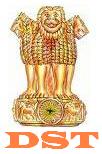OPENING COMMENTS
Health monitoring of automotives has been actively practiced for several decades in the aerospace, power generation and petrochemical process industries. Most of the diagnostic methods used involve vibration monitoring simply because machinery distress very often manifests itself in vibration or a change in vibration pattern. The developments in machinery diagnostic techniques have been motivated by the enormous economic incentive to keep automotives operational. These techniques have successfully identified such problems as cracked shafts, loose assembly of components and serious bearing defects well before these problems propagated into machine failures.
In addition to the general class of automotives health monitoring, there is a significant body of literature involving the analysis and diagnostics of shaft cracks. With the introduction of non-contact displacement probes, also known as proximity probes, direct displacement data could be taken along a shaft. This was extremely valuable because until this time most monitoring came from velocity probes at the bearing caps. This time period also includes the introduction of the computer, which was used to calculate frequency content from the displacement data. With the introduction of proximity probes and computer processing, vibration data from these probes have since been used to categorize particular machine faults to present day.
For monitoring and diagnosing automotive machines, a system needs to be developed to support diagnosis for the maintenance of automotive machines, including prediction of machine faults and estimation of machine life expectancy. This system could consist mainly of a controller exclusive for collection of data for self-diagnosis of the operating condition of the machine and a data base which stores collected data so that the data can be effectively used for the diagnosis mentioned above. To monitor the dynamic behavior of the automotives during transient and steady state operations is an effort to infer the health of the bearings. Shaft displacement sensors placed at various axial and radial positions can give both orbit and displacement (acceleration) information. The theory employed in this approach is that the primary role of the bearings is to prescribe the location of the shaft center.
Deviations occur as the result of applied forces, like imbalance or shock and maneuver loads, or due to some anomaly in the bearings. By mapping out an envelope of “normal and expected” orbit and shaft location data, deviations outside the norm can be readily detected.
Position sensors located at each bearing location as well as at other pertinent points, such as at large mass concentrations like compressor stages, can indicate much about the health of the bearing/shaft system. For this type of displacement measurement, technology is well developed in the form of low cost, low temperature sensors such as eddy current probes. To bearing health monitoring is to measure fluid temperatures in the immediate vicinity of the bearing foils. Since some heat is generated in the bearing via shearing of the lubricating gas film, fluid temperature is a good indicator of the friction level.
In fact, an abrupt rise in temperature at one location, or an increase in the temperature gradient across a bearing can indicate impending failure. In most foil bearing applications, a small amount of air is bled through the bearing to stabilize the temperature. This bleed air also serves to purge the bearing of wear debris and to prevent the possibility of particulate contaminants, for instance from the combustion gas stream, from entering the bearing. Proximity thermocouples can be positioned to measure this air temperature or they can be physically attached to the foil backsides at specific locations. Since the foils rest in a stationary housing, routing the thermocouples out of the engine usually poses no significant problem. Thermocouples can be used to monitor bearing temperatures under varying loading and speed conditions with and without bleed air. Judiciously located bearing thermocouples can serve to augment displacement measurements for rotor support system health monitoring. In the event that the data indicates impending bearing seizure, the engine could be shutdown without serious damage occurring.
Goal of Session
The development of a Health monitoring system (HMS) seeks to generate design for a system that performs diagnoses and failure prediction on automotives. Eventually, a variety of monitoring systems need to be instrumented with embedded high-performance processors to monitor the performance, diagnose failures, and predict anticipated failures.
The purpose of this Brainstorming session on “Health Monitoring of Automotives” is to discuss an approach to integrate data acquisition and analysis for automotives for the purpose of assessing their condition for quality control and maintaining their operational performance to support a system in a cost effective way.
Automotives are continuously operated for many hours. Once they break down, it takes substantial cost to repair them. Besides, since repairing an automotive machine takes much time, it significantly affects the machine activity rate. Therefore, automotives, especially large ones, are required to be free of down time and capable of planned operation without interruption. In order to secure such machines, it is necessary to early detect any symptoms of machine trouble by physical examination, etc. and have the maintenance personnel take suitable measures without delay.
Some issues, that likely to be included in the brainstorming session are:
-
Development of Health Monitoring Parameters Acquisition System.
-
Fault diagnosis model development.
-
Testing and validations of health monitoring parameters.
-
How is condition monitoring beneficial for industries?
Tentative Sessions
-
Programme 1: Health Monitoring of Automotives: Scope.
-
Programme 2: Health Monitoring of Automotives: Challenges involved/Recent advances.
-
Programme 3: Health Monitoring of Automotives: Potential problems.
-
Programme: Health Monitoring of Automotives: Role of academicians/R&D/ Industry.
-
Panel Discussion: Future strategies.
|
Sponsored By
   

|





